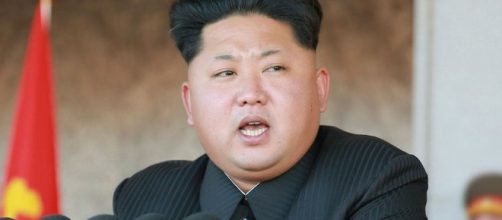As Secretary of State Rex Tillerson wings to Asia on his first official mission #North Korea seeks to draw attention to itself by putting to the test the new American Administration. In the light of his upcoming meeting with the Chinese Leader, President #Donald Trump will soon find business experience may not be the best training grounds for diplomacy.
Missile test
Three weeks ago North Korean dictator Kim Jong-un signalled that he would not be ignored when the country launched a provocative missile test during the visit of Japanese Prime Minster Shinzo Abe to the United States.
The reaction became famous for the photos of the impromptu National Security Council meeting at Trump’s Mar-a-Lago resort following the news of the test.
Subsequently the erstwhile “communist” country also made headlines with the murder in Malaysia of Kim Jong-nam, the dictator’s half brother, which has led to a diplomatic tussle between the two countries with the expulsion of Korean diplomats and tit for tat expulsions of nationals from both countries.
Joint drills
Tillerson’s visit also coincides with joint naval trials involving U.S. naval forces including the Nimitz calls aircraft carrier the USS Carl Vinson. The reply from Pyongyang was a threat to respond to any “provocative action” on the part of the allied forces.
In recent days the United States has deployed a missile defence system in South Korea and in a report by the BBC is planning to also permanently deploy missile equipped Grey Eagle drones in that country.
These plans have led to complaints by the Chinese which will undoubtedly be part of the discussions between President Donald Trump and the Chinese President Xi Jingping in April.
South China Sea
The meeting between the two superpowers comes during a period of difficulty between the two countries due to commercial rivalry and particularly to China’s military expansion of recent years and its construction of artificial islands in the South China Sea which many believe will also be used as advanced military bases in the case of a conflict in the region.
China claims sovereignty over the South China Sea which is also claimed by other countries and its neighbours are worried that these islands are a part of Chinese plans to seize control of these areas. The construction of a new major aircraft carrier by the Chinese is also seen as confirmation of these plans.
The worries of Chinese intentions have reached as far as Australia which has sent navy ships to take part in the joint navy manoeuvres including United States vessels which were meant as a show of force in response to the Chinese activities.
Role
These factors make the situation with North Korea even more difficult to deal with diplomatically.
The Chinese have shown impatience with Kim Jong-un’s repeated infractions of previous brokered agreements to stop nuclear weapons development and as Pyongyang’s long term ally is the country best placed, geographically and diplomatically, to put pressure on the dictatorship.
This issue of the South China Sea is therefore a complication to this tapestry of military tensions in the region.
Japan and South Korea are not the only Asian countries that have privately and undoubtedly confidentially expressed their concerns to Washington in relation to both North Korea’s recent belligerent actions and China’s apparent expansion into the South China Sea.
For the United States the matter becomes even more complicated due to the Administration’s intentions to review its commercial treaties which will have a direct effect on commercial ties between the two countries.
We do not know if President Trump has read Sun Tzu’s classic treatise on the military arts ‘The Art of War’ but there is no doubt that it is part of the training of Chinese leaders for centuries.
The Oval Office would do well to read the book because it would certainly give hints on handling these situations because boardroom battles do not provide the proper experience to navigate these minefields.

